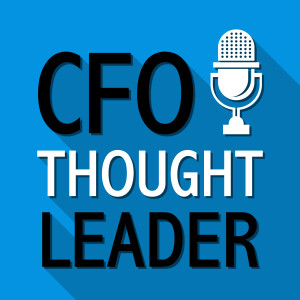
- Podcast Features
-
Monetization
-
Ads Marketplace
Join Ads Marketplace to earn through podcast sponsorships.
-
PodAds
Manage your ads with dynamic ad insertion capability.
-
Apple Podcasts Subscriptions Integration
Monetize with Apple Podcasts Subscriptions via Podbean.
-
Live Streaming
Earn rewards and recurring income from Fan Club membership.
-
Ads Marketplace
- Podbean App
-
Help and Support
-
Help Center
Get the answers and support you need.
-
Podbean Academy
Resources and guides to launch, grow, and monetize podcast.
-
Podbean Blog
Stay updated with the latest podcasting tips and trends.
-
What’s New
Check out our newest and recently released features!
-
Podcasting Smarter
Podcast interviews, best practices, and helpful tips.
-
Help Center
-
Popular Topics
-
How to Start a Podcast
The step-by-step guide to start your own podcast.
-
How to Start a Live Podcast
Create the best live podcast and engage your audience.
-
How to Monetize a Podcast
Tips on making the decision to monetize your podcast.
-
How to Promote Your Podcast
The best ways to get more eyes and ears on your podcast.
-
Podcast Advertising 101
Everything you need to know about podcast advertising.
-
Mobile Podcast Recording Guide
The ultimate guide to recording a podcast on your phone.
-
How to Use Group Recording
Steps to set up and use group recording in the Podbean app.
-
How to Start a Podcast
-
Podcasting
- Podcast Features
-
Monetization
-
Ads Marketplace
Join Ads Marketplace to earn through podcast sponsorships.
-
PodAds
Manage your ads with dynamic ad insertion capability.
-
Apple Podcasts Subscriptions Integration
Monetize with Apple Podcasts Subscriptions via Podbean.
-
Live Streaming
Earn rewards and recurring income from Fan Club membership.
-
Ads Marketplace
- Podbean App
- Advertisers
- Enterprise
- Pricing
-
Resources
-
Help and Support
-
Help Center
Get the answers and support you need.
-
Podbean Academy
Resources and guides to launch, grow, and monetize podcast.
-
Podbean Blog
Stay updated with the latest podcasting tips and trends.
-
What’s New
Check out our newest and recently released features!
-
Podcasting Smarter
Podcast interviews, best practices, and helpful tips.
-
Help Center
-
Popular Topics
-
How to Start a Podcast
The step-by-step guide to start your own podcast.
-
How to Start a Live Podcast
Create the best live podcast and engage your audience.
-
How to Monetize a Podcast
Tips on making the decision to monetize your podcast.
-
How to Promote Your Podcast
The best ways to get more eyes and ears on your podcast.
-
Podcast Advertising 101
Everything you need to know about podcast advertising.
-
Mobile Podcast Recording Guide
The ultimate guide to recording a podcast on your phone.
-
How to Use Group Recording
Steps to set up and use group recording in the Podbean app.
-
How to Start a Podcast
-
Help and Support
- Discover

BONUS Replay: The Rewards of Taking Inspired Action | Brice Hill, CFO, Xilinx
In front of the restaurant’s dozen or more cash registers, customers were standing six or seven deep when Brice Hill raised his voice and began instructing the hungry mall shoppers to immediately exit the store.
“No one listened to a single word I said,” says Hill, who opens our discussion by transporting us back to the mid-1980s, when as a teenage recent graduate of McDonald’s management training program he was given a surprise leadership test.
Having made a trip to the mall for some holiday shopping, Hill had poked his head into the mall’s marquee McDonald’s only to find a few of his fellow managers nervously waiting for a return call from McDonald’s headquarters.
The restaurant—at the time one of the busiest McDonald’s locations on the West Coast—had only minutes earlier received a bomb threat, and as Hill digested the blank stares triggered by his shouts to clear the store, he realized that more extreme measures were required.
Leaving the customers in their queues, the young manager dodged the doubtful stares of employees as he maneuvered his way to the back of the store, where he found the location’s electricity source and without hesitation cut it off.
“They had told me that 20 minutes was the countdown on the thing—we cleared the whole place with only 4 minutes to spare,” recalls Hill, who estimates that the location may have held as many as 500 customers and workers that day.
Later, police would determine that there had been no bomb, but this has never led Hill to second-guess his actions.
“When you’re in that type of situation, you have to be able to act and act like an owner. Even if you don’t know whether you have the right answer, you have to act. There cannot be a void of leadership,” says Hill, underscoring what might be a recurring theme for his career.
Fast-forward a few decades, and Hill is a senior strategic planning executive at Intel Corp. The venue is an Arizona conference room where a group of Intel executives—including the company’s CFO—has gathered to hear Hill offer an analysis that could potentially lead Intel to begin building idle factories.
This time, the doubtful stares quickly turned to dissenting voices as Hill’s strategic analysis failed to win over many of his Intel colleagues.
“When I made the recommendation that we should build an idle factory, there was like a melee in the room. All of the CFO staff was arguing, waving their hands, debating different opinions,” explains Hill, who says that in the minds of traditional finance executives, an idle building equals excess cost. To highlight his point Hill repeats the refrain of “You have to heat it, cool it, and guard it!”
Still, what Hill’s analysis had begun to spotlight was the cost of missing out on growth opportunities in a business wielding 60% to 70% gross margins. Suddenly, having idle factories in place to add additional capacity when growth demanded seemed to have merit.
“At the end, the CFO said, ‘Bryce, I want you to go meet with the treasury staff. They’re experts in derivatives and option modeling. I want you to go see if your math holds up,’” remembers Hill, whose analysis received “a clean bill of health” from treasury before getting a thumbs-up from Intel’s CEO, a final affirmation that led Intel to modify its growth strategy as well as its accounting. Going forward expenses associated with serving the idle factories would be listed as strategic investments rather than costs – a change that has perhaps made management think twice before turning off the lights . –Jack Sweeney
More Episodes
Create your
podcast in
minutes
- Full-featured podcast site
- Unlimited storage and bandwidth
- Comprehensive podcast stats
- Distribute to Apple Podcasts, Spotify, and more
- Make money with your podcast
It is Free
- Privacy Policy
- Cookie Policy
- Terms of Use
- Consent Preferences
- Copyright © 2015-2025 Podbean.com





